2017
What’s with the Sauce? Navigating the various types of soy sauce in Japan
So you’ve decided to venture into Japanese cooking to assimilate, eat healthier, or just to save money. You go to the grocery store to buy yourself the perfect bottle of the holy grail of Japanese cuisine: soy sauce. Only, upon entering the aisle with the nectar of the gods, you are greeted with this, or worse:
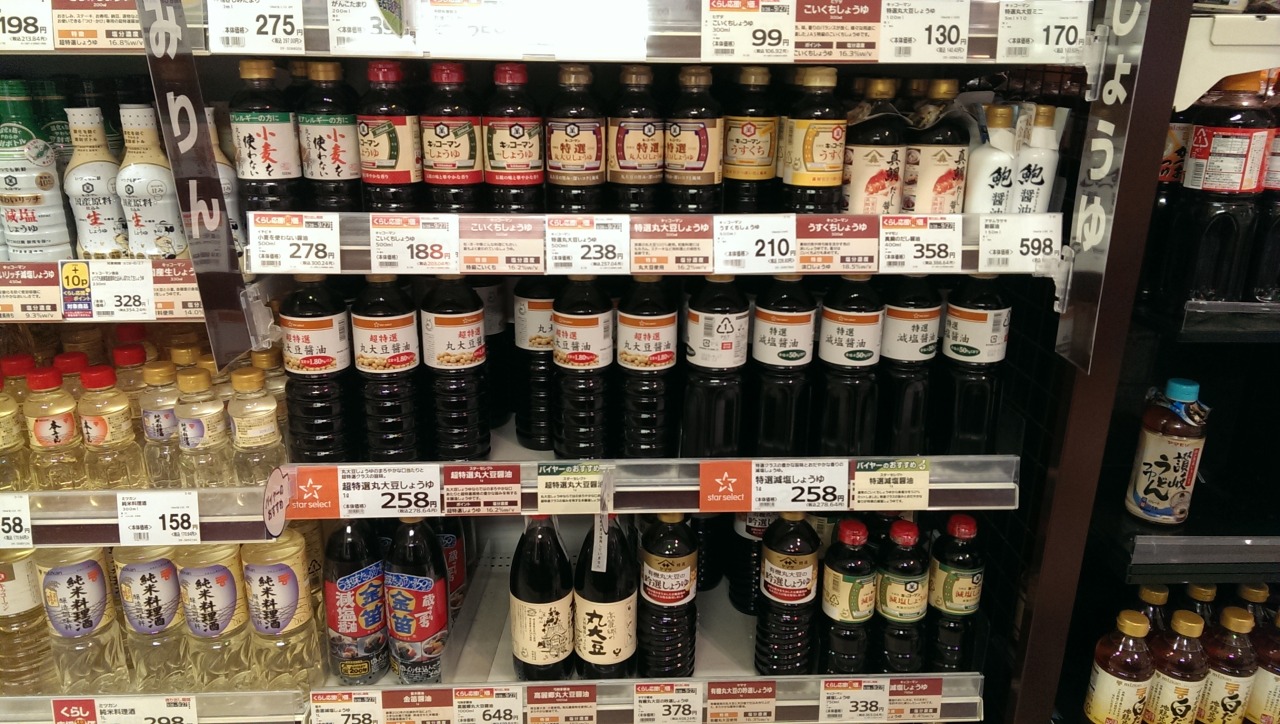
So, what’s the deal with all the sauce?
- うすくち、減塩(げんえん) Low Sodium
- しょうゆ Regular Soy Sauce
- 特選 Choice/Deluxe
- 小麦を使わない Wheat-free Soy Sauce
Basic Types of Soy Sauce (醤油)
1. うすくち、減塩(げんえん) Low Sodium
If you need to buy low sodium soy sauce for dietary or health needs, or simply want a less strong soy sauce, you can easily find the low sodium variety at your grocery store. Depending on the brand, there are two ways this information might be conveyed. In general, low sodium soy sauce is either called うすくち (usukuchi) or 減塩(げんえん) (genen). They will look something like this:
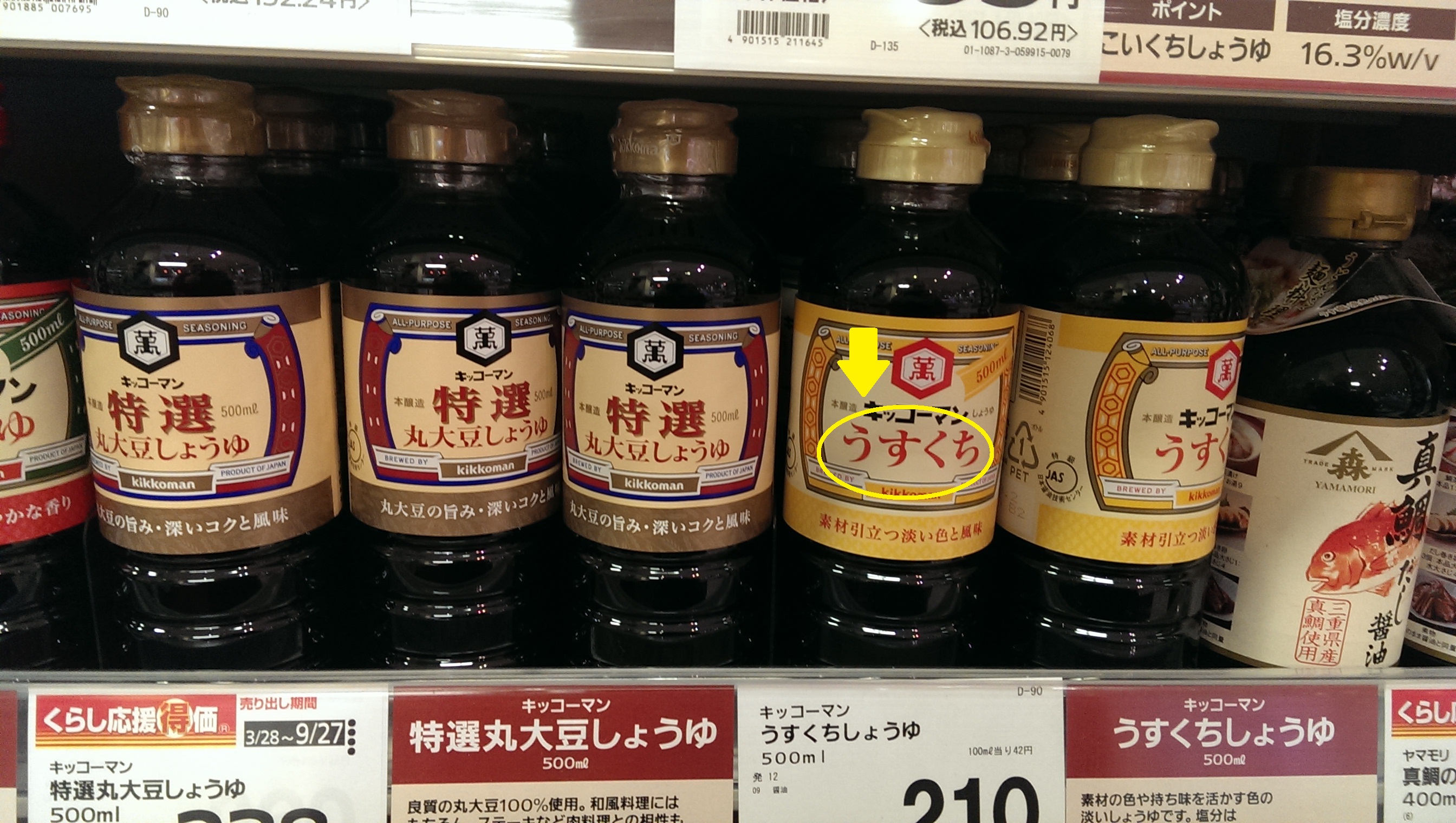
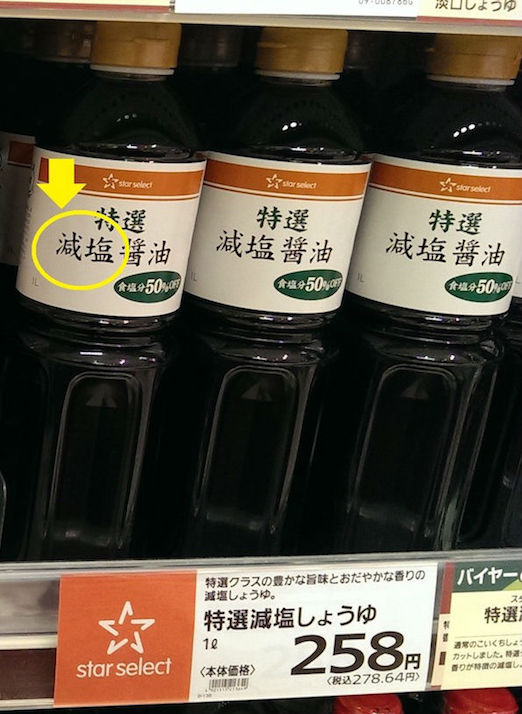
2. しょうゆ Regular Soy Sauce
Normal, plain old soy sauce is pretty straightforward and usually just says しょうゆ on the bottle. Here’s an example:
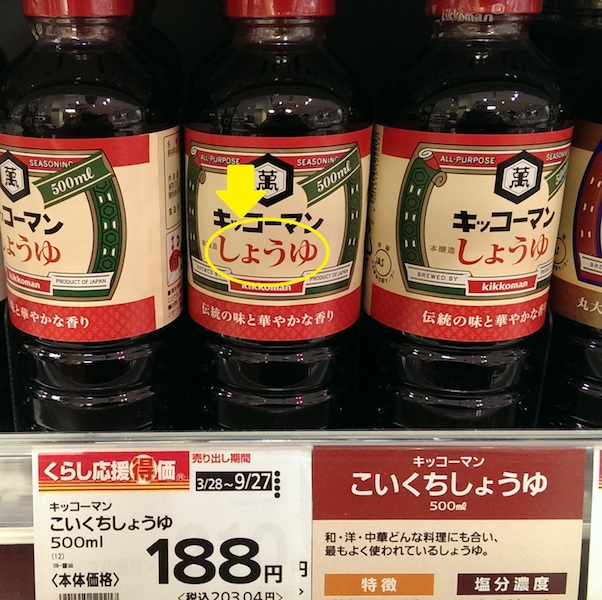
3. 特選 Choice/Deluxe
You can also find more expensive soy sauce marked 特選 (とくせん) (tokusen), meaning “Choice”, or “Deluxe”. Soy sauces marked with this are made of soy beans that have undergone rigorous inspection for the highest quality beans. They will look something like this:
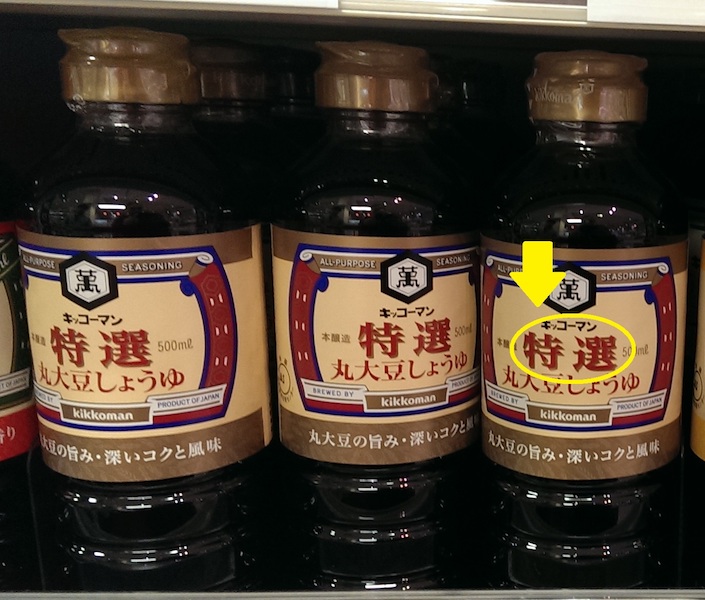
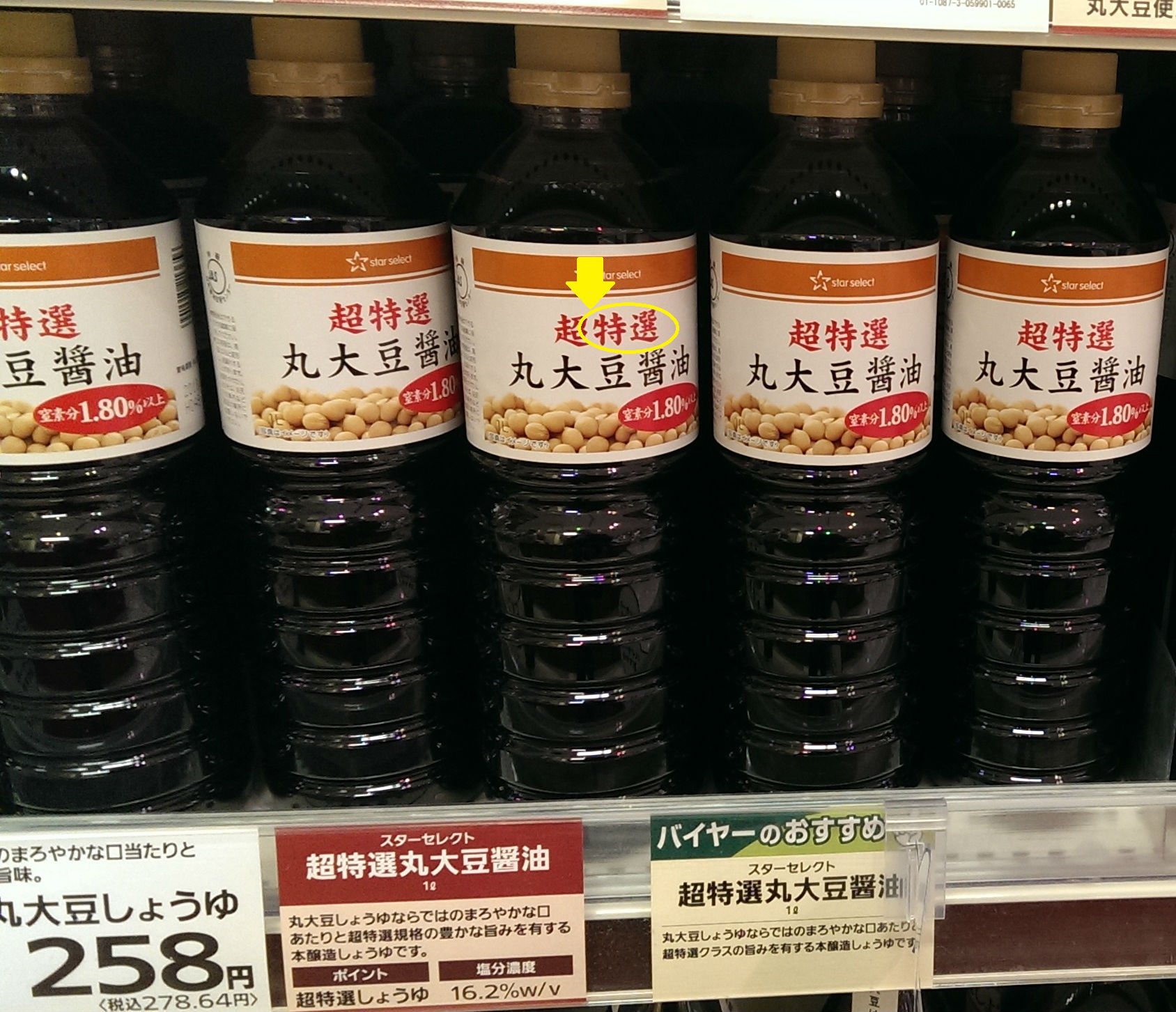
You should note, however, that the deluxe soy sauce by your grocery store’s generic brand may be cheaper than a famous brand’s regular soy sauce, so don’t go by price alone, make sure you check the description on the bottle.
4. 小麦を使わない Wheat-free Soy Sauce
Most soy sauces in Japan contain wheat. You can locate it on the ingredients label by looking for this:

小麦 (こむぎ) Komugi
Luckily, if you cannot eat wheat for any reason, there is a brand of soy sauce available that does NOT contain wheat.

This particular one is called 小麦を使わない (こむぎをつかわない)Komugi wo Tsukawanai.
While there are further types of soy sauce, they generally get more expensive and unless you are a serious cook or are really knowledgeable about the flavour and depth of different kinds, you probably don’t need to worry too much about them. For everyday cooking, one of the above three types should suffice.
For a recipe using soy sauce that even beginners can do, check out our video below on Ginger Pork, or check out the recipe on our website at
https://www.lifeabroad.jp/html/daily_life/recipes/shougayaki.html
